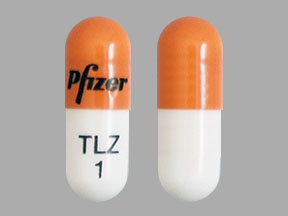Talazoparib Disease Interactions
There are 3 disease interactions with talazoparib.
Talazoparib (applies to talazoparib) hepatic impairment
Moderate Potential Hazard, Moderate plausibility. Applicable conditions: Liver Disease
Talazoparib has not been studied in patients with moderate hepatic impairment (total bilirubin >1.5 to 3.0 × upper limit of normal [ULN] and any aspartate aminotransferase [AST]) or severe hepatic impairment (total bilirubin >3.0 × ULN and any AST). No dose adjustment is required for patients with mild hepatic impairment (total bilirubin =1 × ULN and AST > ULN, or total bilirubin >1.0 to 1.5 × ULN and any AST).
Talazoparib (applies to talazoparib) myelosuppression
Moderate Potential Hazard, Moderate plausibility. Applicable conditions: Immunodeficiency
Myelosuppression consisting of anemia, leukopenia/neutropenia, and/or thrombocytopenia, have been reported in patients treated with talazoparib. Therapy with talazoparib should not be started in myelosuppressed patients and patients that have not adequately recovered from hematological toxicity caused by previous therapies. If myelosuppression occurs during therapy, dose modifications are recommended. Patients should be closely monitored.
Talazoparib (applies to talazoparib) renal impairment
Moderate Potential Hazard, Moderate plausibility. Applicable conditions: Renal Dysfunction
Talazoparib has not been studied in patients with severe renal impairment (CrCl < 30 mL/min) or patients requiring hemodialysis. Caution is advised if used in these patients. A dose reduction is recommended in patients with moderate renal impairment (CrCl 30 - 59 mL/min), and no dose adjustment is required for patients with mild renal impairment (CrCl 60 - 89 mL/min).
Switch to professional interaction data
Talazoparib drug interactions
There are 308 drug interactions with talazoparib.
More about talazoparib
- talazoparib consumer information
- Check interactions
- Compare alternatives
- Side effects
- Dosage information
- During pregnancy
- Drug class: PARP inhibitors
- Breastfeeding
- En español
Related treatment guides
Drug Interaction Classification
| Highly clinically significant. Avoid combinations; the risk of the interaction outweighs the benefit. | |
| Moderately clinically significant. Usually avoid combinations; use it only under special circumstances. | |
| Minimally clinically significant. Minimize risk; assess risk and consider an alternative drug, take steps to circumvent the interaction risk and/or institute a monitoring plan. | |
| No interaction information available. |
See also:
Further information
Always consult your healthcare provider to ensure the information displayed on this page applies to your personal circumstances.


